Did you know that growing rhubarb from seeds is an economical way to start a large rhubarb patch? Not only does it save you money, but it also opens up a world of possibilities in your garden. While seeds may not produce all red stalks like divisions or crowns, they all taste the same and are perfect for pies!
Key Takeaways:
- Starting rhubarb seeds indoors is recommended for optimal germination.
- Rhubarb is a cool-weather crop and can be grown as a perennial in climate zones 6 and cooler.
- In warmer climates, rhubarb can be grown as a short-lived perennial or a winter annual.
- When harvesting rhubarb, only the stalks should be used, while the leaves should be avoided due to their toxicity.
- Rhubarb seeds can be a cost-effective way to grow this versatile vegetable in your garden.
Starting Rhubarb Seeds
When it comes to growing rhubarb from seeds, the process begins with proper preparation and care. Starting rhubarb seeds indoors can give you a head start and increase the chances of successful germination. Here are some essential steps to get your rhubarb seeds off to a great start:
Soaking Rhubarb Seeds
Before planting rhubarb seeds, it’s beneficial to soak them in water for 1-2 hours. Soaking the seeds helps to soften the outer coat and speed up the germination process. Simply place the seeds in a bowl of water and allow them to soak before planting.
Planting Rhubarb Seeds Indoors
If you choose to start your rhubarb seeds indoors, it’s essential to use a suitable organic planting mixture. Plant two seeds per pot, ensuring they are covered with a thin layer of soil. Using peat pots or cow pots can make transplanting easier when it’s time to move the seedlings outside.
Providing Optimal Conditions for Germination
Proper temperature is crucial for rhubarb seed germination. If the room temperature is below 70°F, consider using a heating cable or mat to provide warmth to the seeds. This can help speed up germination and ensure healthy growth.
Remember, rhubarb seeds germinate quickly when planted in late August or early September. It’s important to keep the seedlings evenly moist during this time but avoid over-watering, as excess moisture can lead to root rot.
By following these steps, you can increase your chances of successful rhubarb seed germination. Starting rhubarb seeds indoors allows you to control the growing environment and ensure optimal conditions for healthy seedlings.
Growing Rhubarb from Seed as a Perennial
When it comes to growing rhubarb from seed as a perennial, careful planning and proper care are essential for success. Follow these steps to ensure your rhubarb seedlings thrive and provide a bountiful harvest:
- Start Indoors: Begin by starting the seeds indoors 8-10 weeks before the average last frost. This will give the seedlings a headstart and allow them to establish strong root systems.
- Transplant with Care: Once the seedlings reach a healthy size, transplant them into a well-amended garden bed before the last frost. Choose a location that receives at least 6 hours of direct sun daily, ensuring optimal growth and development.
- Provide Shade: In warmer climates, where intense summer heat is common, it’s important to provide shade for your rhubarb plants. This can be achieved by placing shade cloth or planting them in a location that offers natural shade during the hottest months.
- Mulch for Moisture: Mulch around the seedlings to retain soil moisture and keep the roots cool. This will help prevent moisture loss and ensure the plants remain hydrated throughout the growing season.
- Harden Off: Before transplanting the seedlings into the garden, it’s crucial to harden off the plants. This process helps them acclimate to outdoor conditions gradually. Alternatively, you can use a row cover for frost protection if needed.
- Care and Maintenance: Rhubarb is hardy in zones 2 to 6, but it still requires proper care. Avoid harvesting during the first year to allow the plant to establish a strong root system. Remove any flowering stalks that appear to divert energy towards foliage growth. Additionally, top-dress the plants with aged manure or compost in the spring for added nutrients.
- Divide for Rejuvenation: To keep your rhubarb plants vigorous and productive, consider dividing mature plants every 3 to 4 years. This process helps rejuvenate the plants and promote new growth, ensuring a continuous supply of delicious rhubarb stalks.
By following these guidelines, you can enjoy the delightful taste of homegrown rhubarb year after year. Whether you’re a seasoned gardener or just starting out, growing rhubarb from seed as a perennial is a rewarding experience that will add beauty and flavor to your garden.
Growing Rhubarb from Seed as an Annual
To enjoy a bountiful rhubarb harvest within a single growing season, consider growing rhubarb from seed as an annual. This technique is particularly suitable for regions with very mild winters or where plants can be protected from damaging frost with a cold frame or row cover. By following the right steps and timing, you can savor the tangy goodness of homegrown rhubarb from March to early May.
Planting in Fall: A Season for Rhubarb
Planting rhubarb seeds in late August to early October sets the stage for a successful winter crop. Choose a cool location that will provide the necessary conditions for germination and early growth. The soil should be well-drained and slightly acidic, with a pH level between 5.5 and 6.5.
When sowing the seeds, follow the package instructions to ensure proper spacing and planting depth. As the seedlings emerge, thin them out to a distance of about 4 inches apart. This will allow them enough space to develop into robust plants.
Winter Rhubarb Growing: Protection against Frost
As winter approaches, be prepared to protect your rhubarb seedlings from potential frost damage. Consider using a cold frame or row cover to shield the plants from extreme cold temperatures. A frost-free environment ensures their survival so they can thrive and produce a bountiful harvest.
Harvesting Rhubarb in Late Spring
The culmination of your efforts will come in late spring when it’s time to enjoy the fruits of your labor. Harvest the rhubarb plants before intense summer heat kills them. As you cut or pull off the stalks, be sure to avoid the toxic leaves, which are not suitable for consumption.
Rhubarb plants grown as annuals can provide a satisfying harvest period from March to early May. The tender stalks are perfect for making pies, jams, and other delightful culinary creations.
Comparison of Growing Rhubarb as an Annual and Perennial
| Growing as an Annual | Growing as a Perennial | |
|---|---|---|
| Plant Life Cycle | Annual | Perennial |
| Harvesting Time | March to early May | Spring to early summer |
| Winter Care | Cold frame or row cover | Mulching and winter protection |
| Yield | Single-season harvest | Longer lifespan, multiple harvests |
| Growth Habit | Compact and fast growth | Established and reliable growth |
As shown in the comparison table, growing rhubarb from seed as an annual offers a concentrated and relatively quick harvest period. On the other hand, growing rhubarb as a perennial allows for a longer lifespan and the potential for multiple harvests throughout the years. Consider your specific gardening goals, climate conditions, and available resources to determine which approach best suits your needs.
Saving Rhubarb Seed
When it comes to growing rhubarb from seed, saving and collecting rhubarb seed is a cost-effective and rewarding method. By saving and storing rhubarb seed, you can easily propagate new plants and expand your rhubarb patch with minimal expense. Here’s how you can save rhubarb seed:
1. Leave a Few Flower Stalks
Allow a few flower stalks to remain on your rhubarb plants instead of removing them. These flower stalks will develop into white blossoms that transform into seed heads over time. It’s important to leave these stalks intact to ensure the production of rhubarb seeds.
2. Let the Seed Heads Dry
As the flowers transition into seed heads, allow them to dry directly on the rhubarb plants. This drying process helps to mature and ripen the seeds, making them viable for planting in the future. It’s crucial to avoid removing the seed heads prematurely to ensure the seeds are fully developed.
3. Collect the Rhubarb Seed
Once the stalks have completely dried down, it’s time to collect the rhubarb seed. Gently cut or pluck the seed heads from the plants and separate them from any remaining flower or stem material. Be sure to handle the seed heads with care to prevent damage to the seeds.
4. Dry and Store the Seed
Before storing the rhubarb seed, it’s important to dry them thoroughly. Spread the seeds in a single layer on a clean, dry surface and let them air dry for a few weeks. Drying the seeds completely removes any moisture, preventing the growth of mold or fungus during storage.
Once the rhubarb seeds are dry, store them in airtight containers such as glass jars or resealable plastic bags. Be sure to label the containers with the date and variety of the seeds for easy identification in the future. Store the seeds in a cool, dark place, such as a pantry or refrigerator, to maintain their viability for longer periods.
By following these simple steps, you can save, collect, and store rhubarb seed to grow your own rhubarb plants from scratch. With a single rhubarb plant producing hundreds of seeds, this method offers a cost-effective way to enjoy the delicious and versatile benefits of rhubarb.
Growing Rhubarb from Seed – Key Considerations
When growing rhubarb from seed, several key considerations should be taken into account to ensure successful growth. In this section, we will discuss the climate suitability, seedling care, and planting rhubarb seedlings.
Climate Suitability
Rhubarb thrives in cool climates with well-drained soil and requires at least 6 hours of direct sunlight each day. It is important to choose a suitable location in your garden or yard that meets these criteria to provide optimal growing conditions for your rhubarb seedlings.
Seedling Care
Once your rhubarb seeds have germinated and the seedlings have sprouted, it is crucial to provide proper care to ensure their healthy development. Transplant the seedlings into well-amended soil that is rich in organic matter. This will provide the necessary nutrients for their growth and establishment.
Mulching around the seedlings can help retain moisture in the soil and keep the roots cool during hot summer months. Ensure that the seedlings are watered regularly, keeping the soil evenly moist but avoiding over-watering to prevent root rot.
Planting Rhubarb Seedlings
Rhubarb can be grown as a perennial in cooler zones and as an annual in warmer zones. If you are in a cooler climate, transplant your rhubarb seedlings outdoors before the average last frost date. Choose a location with sufficient sunlight and space for rhubarb’s large and spreading leaves.
If you are in a warmer climate, where rhubarb is grown as an annual, consider planting your seedlings in the fall. This will allow them to establish and grow during the cooler months, ensuring a stronger plant for the following spring.
| Climate Zone | Best Growing Method |
|---|---|
| Zones 2 to 6 (Cooler Climates) | Grown as a perennial |
| Zones 7 to 10 (Warmer Climates) | Grown as an annual |
Remember to harvest the rhubarb stalks carefully, avoiding the toxic leaves. With proper considerations for climate suitability, seedling care, and planting techniques, you can enjoy the bountiful harvest of your homegrown rhubarb.
Forcing Rhubarb for an Early Crop
Forcing rhubarb is a great technique to obtain an early crop of sweeter and pinker shoots. By excluding light from the plants in midwinter, you can stimulate their growth and enjoy an early harvest. There are several techniques you can use to force rhubarb. One method is using an ornamental forcer, which is specifically designed to cover the rhubarb plant and block out light. Another option is to create a box covered in black plastic to achieve the same effect.
To provide additional heat for the forced rhubarb, you can add manure around the forcer. This will create a warmer microclimate, encouraging the plants to grow faster. Once the shoots appear, they can be harvested in as little as 2 to 4 weeks, allowing you to enjoy delicious rhubarb earlier in the season.
However, it’s important to note that forcing rhubarb does cause stress to the plant and can weaken it over time. To maintain the health of your rhubarb plants, it’s recommended not to force them too often or for too long. This will ensure that the plants have adequate time to recover and grow strong for future harvests.
Benefits of Forcing Rhubarb:
- Early crop: Obtain a harvest of sweeter and pinker rhubarb shoots earlier in the season.
- Variety: Create a contrast in flavors and colors by growing forced rhubarb alongside traditionally grown rhubarb.
- Extend the season: Enjoy rhubarb delights for a longer period by combining forced and traditional harvests.
- High yields: Forcing rhubarb can result in larger, more abundant stalks compared to traditionally grown rhubarb.
With the right techniques and careful attention to the health of your plants, forcing rhubarb can be a rewarding method to kickstart your rhubarb harvest and savor the flavors of this versatile vegetable earlier in the year.
Pests, Diseases, and Harvesting Rhubarb
When it comes to cultivating rhubarb, there are a few pests and diseases to be aware of. Slugs and snails can pose a threat to young seedlings, but you can deter them by keeping the plants off the ground or implementing other slug control methods. If your rhubarb plants show signs of fungal infections or viruses, it may be necessary to remove the affected plants to prevent further spread.
When it’s time to harvest your rhubarb, it’s important to do so correctly. Remember to pull or cut off the stalks, being careful to avoid the toxic leaves. This will ensure a bountiful harvest that’s both safe and delicious.
Once you’ve harvested your rhubarb, you’ll want to store it properly to extend its freshness. Fresh rhubarb can be stored in the fridge for about two weeks. If you’d like to enjoy rhubarb year-round, consider freezing it. Freezing rhubarb is a simple and effective way to preserve it for future use.
Rhubarb is a versatile ingredient with many culinary uses. From classic rhubarb crumbles and tarts to indulgent rhubarb pies and flavorful preserves, there are countless ways to enjoy the unique tangy taste of rhubarb in your favorite dishes.
Rhubarb Pests and Diseases:
| Pest/Disease | Signs and Symptoms | Prevention |
|---|---|---|
| Slugs and Snails | Holes in leaves | – Keep young seedlings off the ground – Use slug control methods |
| Fungal Infections | Discolored or wilting leaves, fuzzy growth | – Remove affected plants – Improve air circulation |
| Viruses | Yellowing or mottled leaves, stunted growth | – Remove affected plants – Control aphid populations |
Harvesting and Storage Tips:
- Harvest rhubarb by pulling or cutting off the stalks, avoiding the leaves.
- Store fresh rhubarb in the fridge for up to two weeks.
- Freeze rhubarb for long-term storage and year-round use.
Rhubarb is not only a flavorful addition to your recipes, but it also offers several health benefits. It is packed with vitamins, minerals, and fiber, making it a nutritious choice for your diet. Whether you’re making a delicious rhubarb pie or preserving its tangy taste in a jar, rhubarb is a versatile and delightful ingredient that will surely elevate your culinary creations.
Conclusion
Growing rhubarb from seed is a cost-effective and rewarding way to establish your own rhubarb patch. While the seedlings may not produce the vibrant red stalks of established plants, they still offer the same delicious taste and can be used in a variety of culinary creations. By starting the seeds indoors and transplanting them into well-amended soil, you can ensure optimal growth and development.
It is important to consider the climate and provide appropriate care based on your region. Rhubarb thrives in cool climates with well-drained soil and at least 6 hours of direct sunlight. Whether you choose to grow it as a perennial or an annual, taking the necessary steps to create a suitable environment for your rhubarb plants will result in a healthy and abundant harvest.
Forcing rhubarb can provide an early crop, but it should be done cautiously to avoid weakening the plant. Paying attention to pest and disease management, as well as proper harvesting and storage techniques, will ensure a successful rhubarb harvest. With its versatility and nutrient-rich properties, growing rhubarb from seed offers a cost-effective way to enjoy this versatile vegetable throughout the season.

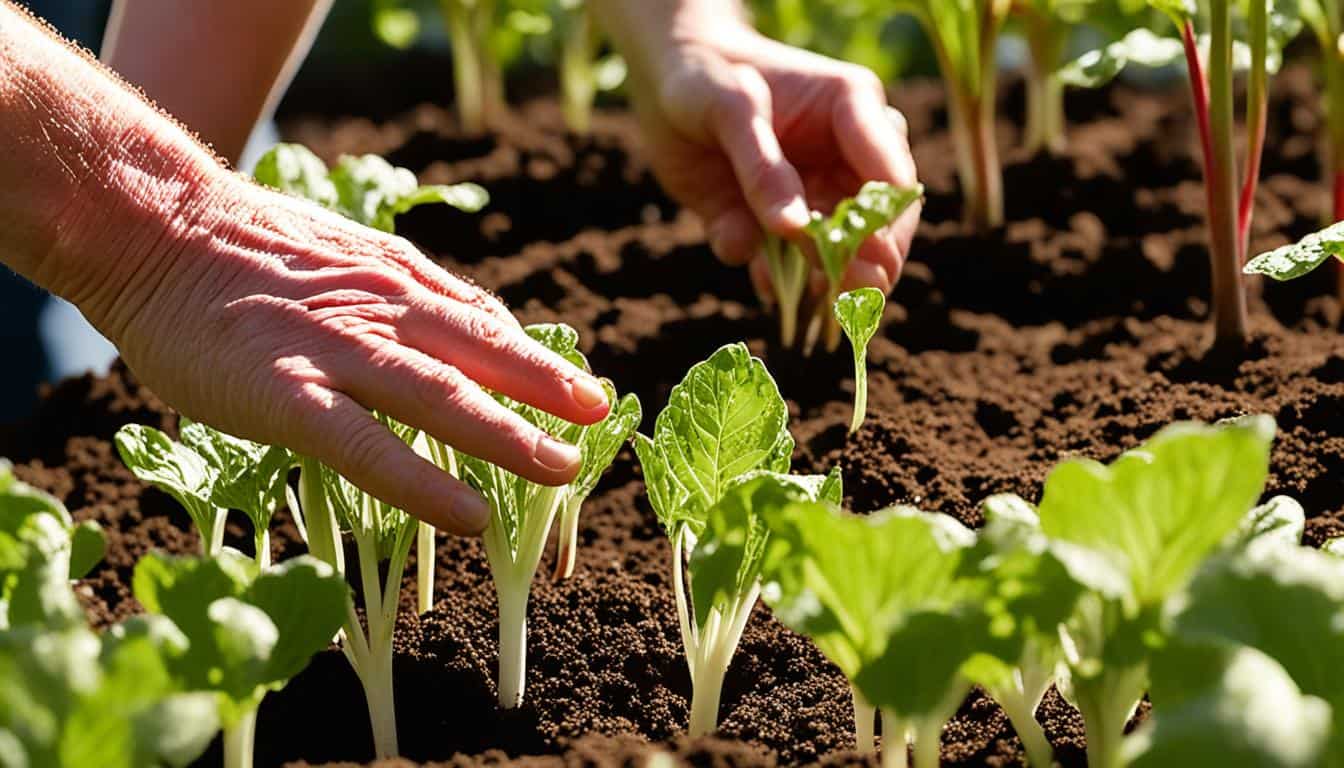
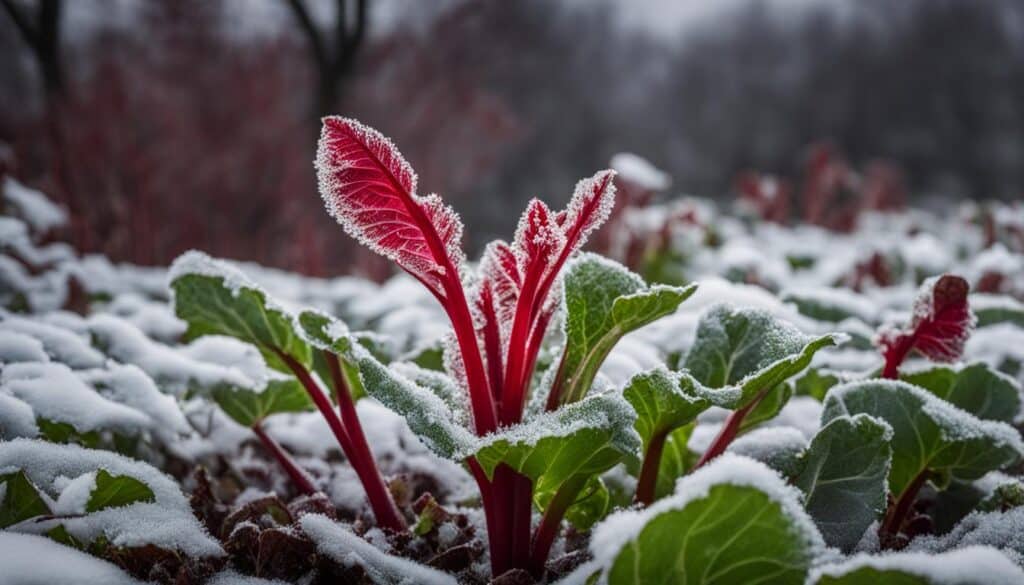
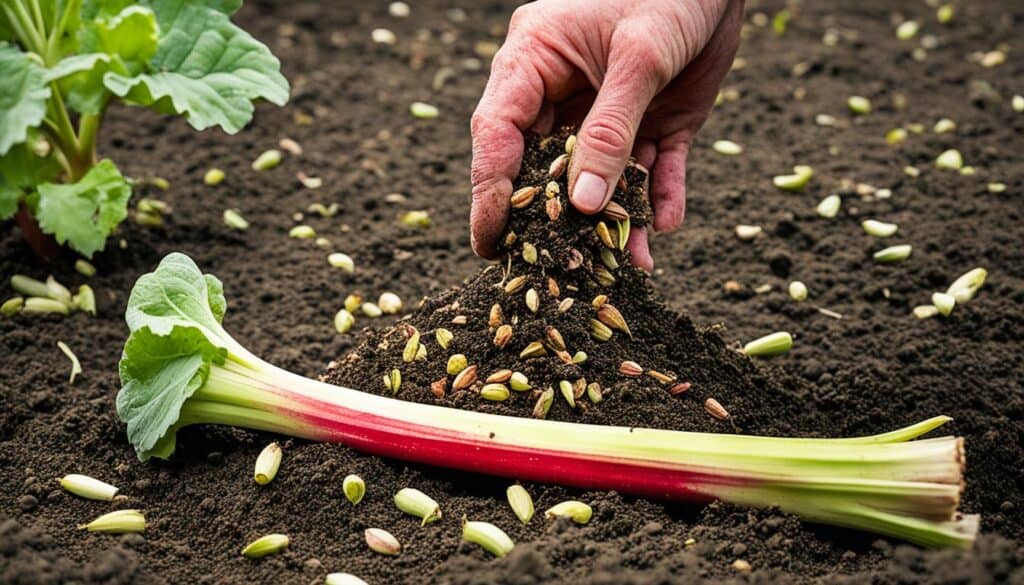
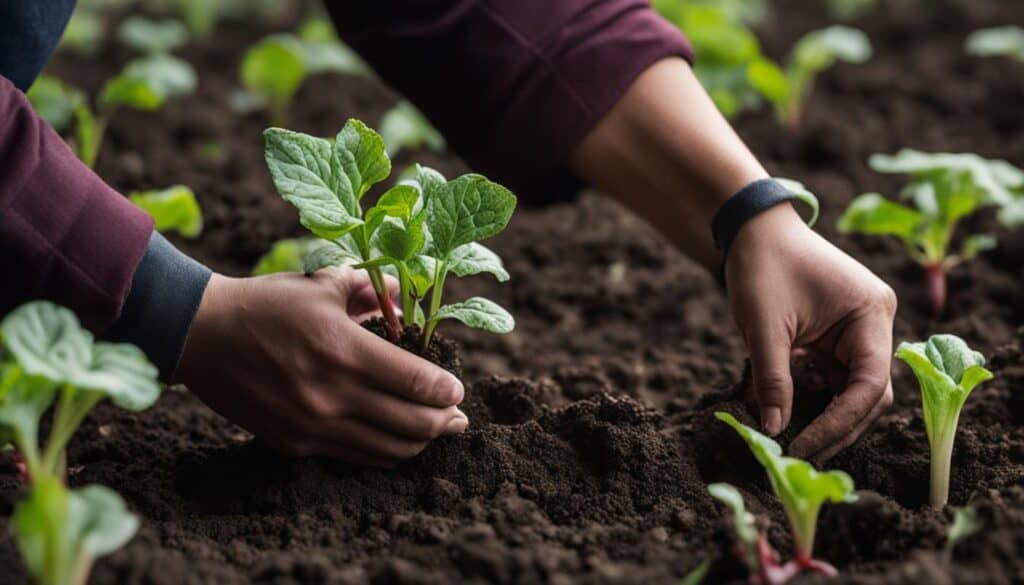

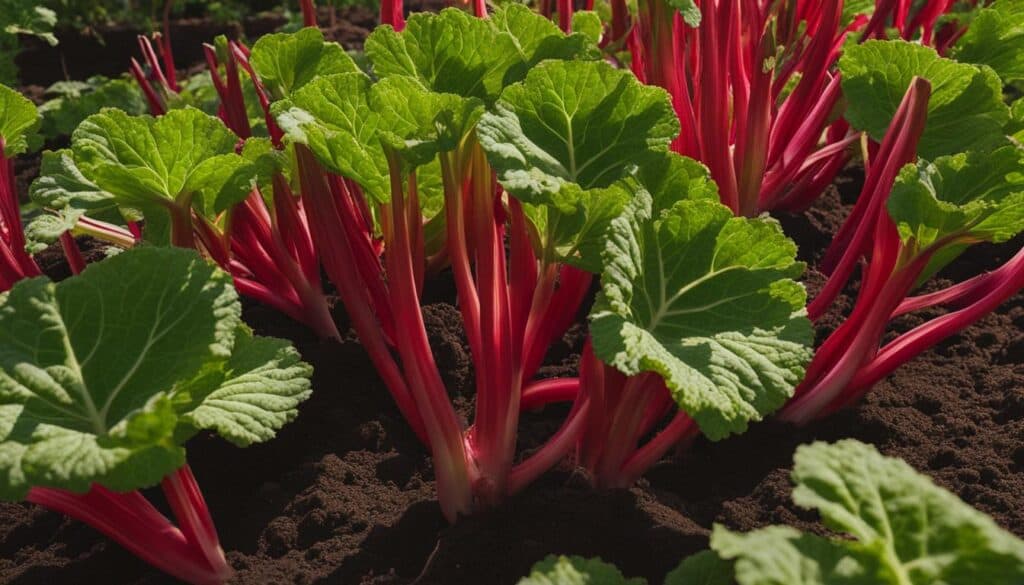



Leave a Reply